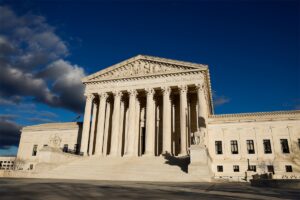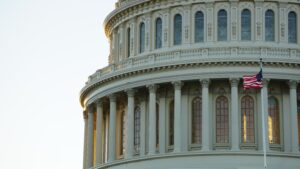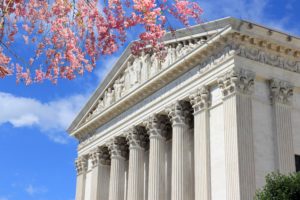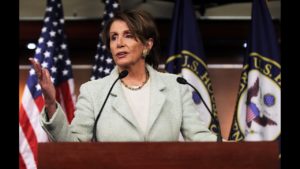Washington Examiner: Supreme Court could rein in the administrative state
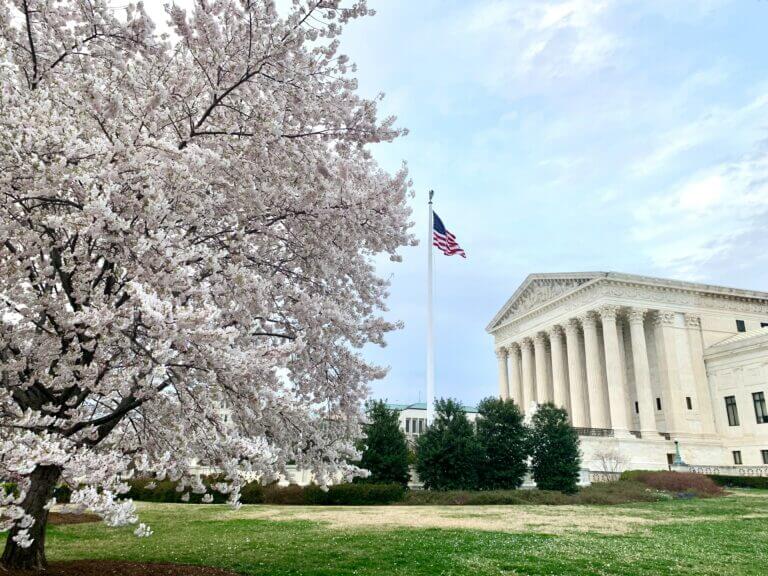
Could a Supreme Court opinion about the arcane question of hospital reimbursement rates deal a critical blow to the unconstitutional nature of the federal regulatory state?
The narrow issue in American Hospital Association v. Becerra is about the proper interpretation of the rules that the Department of Health and Human Services must follow when setting hospital reimbursement rates. The issue is contentious because the relevant statute about hospital reimbursement is ambiguous. So the broader question at stake is: How should the high court resolve that ambiguity?
In most such situations, a judge evaluates the parties’ competing arguments about the text’s meaning and, using the traditional tools of statutory interpretation, will discern the best interpretation. But according to a 1984 Supreme Court opinion in Chevron v. NRDC, judges must act differently when the federal government is the party interpreting the statute and announces its interpretation through a binding rule. Then, the judge must defer to the government’s interpretation if that interpretation is at least “reasonable” — even if another interpretation better captures the statute’s meaning.
Judges are sometimes compared to umpires. It is their job to call the legal equivalent of balls and strikes. Chevron departs from that deeply rooted norm of judicial impartiality and asks judges to defer to one team.
As Justice Neil Gorsuch observed while still a lower court judge, this result inverts conventional principles of separation of powers, under which Congress sets national policy through statutes, the executive branch enforces the law, and the courts interpret those statutes to “say what the law is.” Chevron deference transfers many of the judicial branch’s interpretative responsibilities to the executive branch.
Chevron is sometimes defended on the ground that agencies are more likely to be experts on the technical matters they regulate than generalist judges. But even if differences in expertise justified systemic judicial bias in favor of the government, Chevron has been applied well outside of such narrowly scientific or technical contexts. Notably, the Supreme Court has held that agencies also receive Chevron deference on jurisdictional issues that define the scope of the agency’s authority — a legal question well within the sphere of generalist judges’ competence.
What about the practical effects of Chevron? Government agencies have a natural tendency to interpret ambiguous laws in the way that most increases their power. Judicial deference under Chevron entrenches those expansive agency-aggrandizing interpretations, facilitating growth in the size and intrusiveness of the federal government.
The Constitution gives the federal government limited and enumerated powers, leaving most regulatory responsibilities to the states and tort-law remedies. During the Progressive era, several noted thinkers challenged traditional limitations on central government control. They envisioned a large, federal administrative state, led by benevolent experts, who could exquisitely micromanage the tiniest details of Americans’ everyday lives. The Constitution of limited and enumerated powers was an impediment to realizing that vision, so they worked for decades to subvert the traditional limits on federal agency powers and secured some wrongheaded court rulings that enable regulatory agencies to operate in unconstitutional ways.
The modern administrative state is not as benevolent and efficient as its Progressive champions had hoped, but more importantly, its undemocratic and unlawful operation predictably leads to overreach and abuses of individual liberty. In the COVID era, the FDA’s delays in approving testing and vaccines and the CDC’s eviction moratorium have been in the headlines frequently. Other regulatory mandates — such as Department of Energy rules that make our dishwashers less effective at cleaning, or the Education Department’s zealous enforcement of disability laws that have scared schools away from allowing peanut butter — are among the thousands of lesser dictates that unreasonably interfere with our lives. Revitalizing a free, flexible, and dynamic society can appear a formidable challenge.
Fortunately, during the American Hospital Association oral argument, several justices expressed interest in overruling or limiting Chevron’s reach. Justice Clarence Thomas flat-out asked the hospitals’ lawyer if he was “arguing that we should overrule Chevron.” Justice Samuel Alito had a similar query: “If the only way we can reverse the D.C. Circuit [Court] is to overrule Chevron, do you want us to overrule Chevron?”
Even if the court declines to overrule Chevron entirely in this case, it could narrow its reach. Gorsuch specifically asked, “What’s ambiguous enough to trigger deference to the government?” In all the years that Chevron has been on the books, the courts have never straightforwardly answered that question.
If the Supreme Court narrows the situations in which a statute can be considered ambiguous, that would be a crucial step toward reining in the growth of the administrative state resulting from wrongful judicial deference.
This op-ed was originally published by Washington Examiner on December 29, 2021.


